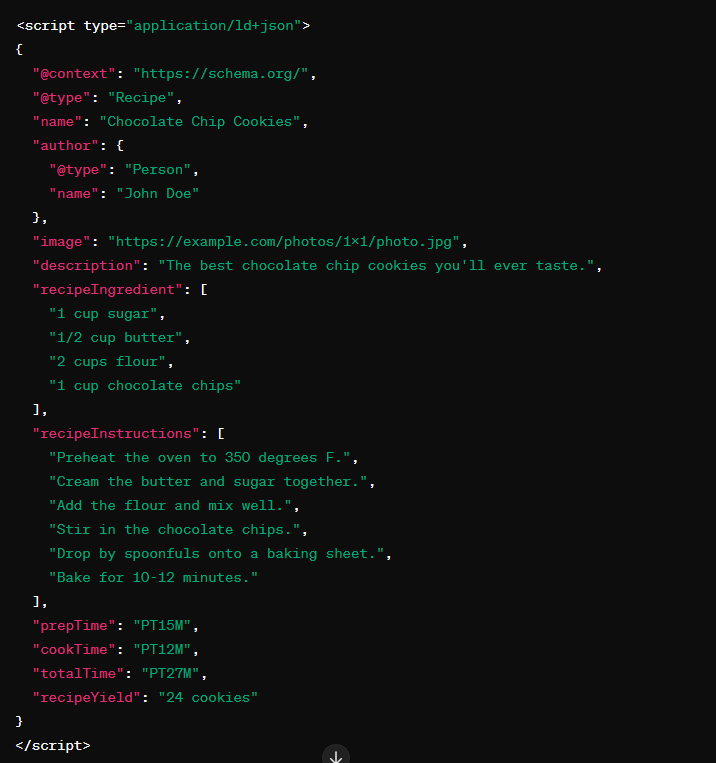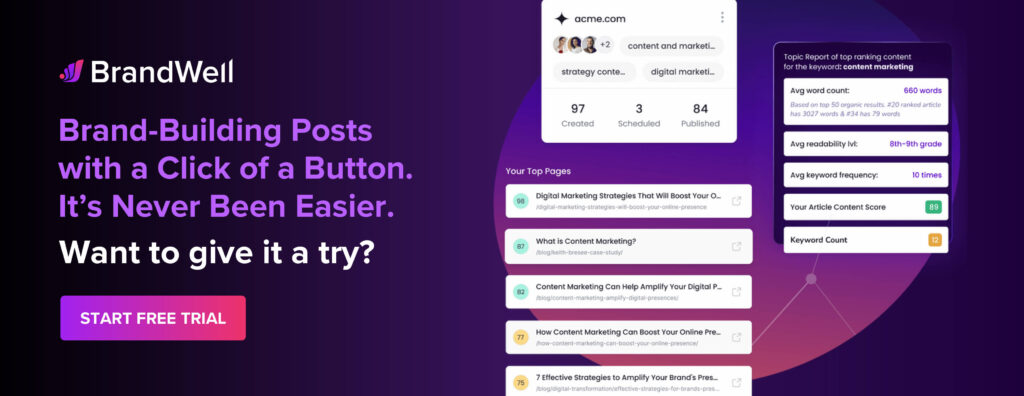Discover top guides, trends, tips and expertise from AIO Writers
What Is SEO Rich Text? Boost Your Search Rankings Now
Julia McCoy
Monday, 13th May 2024
You’ve worked tirelessly crafting compelling content for your website, but search engines just aren’t giving it the attention it deserves. What’s the deal?
Turns out, there’s a secret ingredient that can take your content from “meh” to “magnificent” in the eyes of Google. It’s called SEO-rich text, and it’s about to become your new best friend.
Curious about this secret weapon that can skyrocket your content’s search rankings? Let’s break down what is SEO-rich text and uncover its incredible potential!
Table Of Contents:
- What Is SEO Rich Text?
- How Rich Snippets Work
- Benefits of Rich Snippets
- Types of Rich Snippets
- Best Practices for Creating SEO-Rich Text
- The Future of Rich Snippets
- FAQs: What is SEO Rich Text?
- Embrace Rich Snippets for SEO Success
What Is SEO Rich Text?
If you’ve ever searched for something on Google, you’ve probably noticed that some results stand out more than others. They might have a star rating, a photo, or even a little snippet of the article right there on the search page.
Those, my friend, are what we call SEO-rich text or rich snippets.
Rich snippets are a type of structured data markup that webmasters can add to their existing HTML, which allows search engines to better understand the information contained on each web page. This can enhance search results by providing more informative and visually appealing results.
Rich snippets can display additional information such as:
- Reviews and ratings: Stars, reviewer names, review count, and testimonials.
- Recipes: Ingredients, cooking times, and calorie counts.
- Events: Dates, locations, and ticket prices.
- Products: Prices, availability, and product images.
- People: Job titles, contact information, and social media profiles.
- Organizations: Logos, contact information, and social profiles.
- Music: Album information, release dates, and track listings.
- Articles: Headlines, images, and publication dates.
Let’s say you have a recipe on your food blog. With recipe schema markup, you can tell Google the ingredients, cooking time, ratings, and more. Google can then use this information to create a rich snippet in the search results, making your recipe look way more appealing than a plain old link.

The goal of rich snippets is to provide users with more detailed and relevant information directly in the search results, which can improve click-through rates and drive more targeted traffic to websites. They are implemented using schema.org vocabulary and can be embedded into web pages using various formats such as JSON-LD, Schema Microdata, or RDFa.
Benefits of SEO-Rich Text
So why bother with SEO-rich text?
Because it can seriously boost your click-through rates on the SERPs.
When your search result looks more enticing and informative, people are more likely to click on it.
In fact, some studies have shown that rich snippets can increase clicks by up to 30%.
But the benefits don’t stop there. Rich snippets can also:
- Improve your website’s visibility in search results
- Establish trust and credibility with potential visitors
- Attract more targeted, qualified traffic to your site
- Enhance the user experience by providing relevant information upfront
How Rich Snippets Work
Okay, so we know what rich snippets are and why they’re important. But how do they actually work?
Implementing Structured Data
The first step to getting those coveted rich snippets is to add structured data markup to your website’s HTML. This might sound intimidating, but it’s actually not too difficult — especially if you’re using a content management system like WordPress that has plugins to help with this.
Essentially, you’ll need to add some special tags and properties to your content that tell search engines what each element is (like a recipe’s name, image, ingredients, etc.). Schema.org has a huge collection of different schema types and properties you can use depending on your content.
Here’s an example of a rich snippet for a recipe using JSON-LD:

Generating Rich Snippets
Once you’ve added the structured data markup to your site, Google will be able to read and understand it better. However, just because you have the markup doesn’t necessarily mean your page will get a rich snippet.
Google’s algorithm is a complex beast, considering a wide range of factors when deciding whether to display a rich snippet.
The quality of your content, the user experience on your site, and even the specific search query all play a role. But if you want to be in the running for those coveted rich snippets, having the right schema markup is non-negotiable.
Displaying Rich Snippets in Search Results
If Google does decide to use your structured data to generate a rich snippet, it will show up right there in the search results under your page’s title and meta description. The exact information and format will depend on the schema type, but it could be anything from review stars to recipe photos.
Benefits of Rich Snippets
We’ve touched on some of the key benefits of using SEO-rich text, but let’s dive a little deeper. After all, if you’re going to put in the effort to implement them, you want to know it’s worth it, right?
Improved Click-Through Rates
This is probably the biggest and most tangible benefit of rich snippets. When your search result looks more attractive and informative, people are simply more likely to click on it.
A study found that search results with rich snippets had a CTR of 58% compared to 41% in those without.
Think about it – if you’re searching for a chicken parmesan recipe and one result shows the star rating, cook time, and a mouthwatering photo right in the snippet, you’re probably going to choose that one over a plain text result.
Those extra details can make all the difference.
Enhanced User Engagement
Rich snippets don’t just get more people to click through to your site – they can also improve engagement once visitors arrive. That’s because the structured data gives users a sneak peek of what to expect from your content.
If someone clicks on your article snippet and sees that it has a recent publication date, multiple images, and a 5-star review from an expert, they’ll likely stick around longer to read it.
On the other hand, if the snippet looks promising but the actual page is outdated or low-quality, the user might bounce right away.
Increased Online Visibility
While rich snippets don’t have a direct impact on search rankings, they can be a game-changer for your visibility and organic traffic.
Picture this: your search result, decked out with eye-catching visuals and irresistible information, luring in clicks like a moth to a flame. As more people gravitate towards your snippet, your impressions and clicks could skyrocket, leading to a boost in organic traffic that’ll make your competitors green with envy.
Plus, certain types of rich snippets (like a product or recipe carousel) can help you show up in more places on the search results page, giving you extra exposure beyond the standard blue links. In fact, a recent Local SERP Study analyzing over 130,000 search result pages found that directories often outrank business websites, making it even more crucial to leverage rich snippets for better visibility and engagement.
Higher Conversion Rates
At the end of the day, getting more traffic is great – but what really matters is turning those visitors into customers or subscribers. And rich snippets can help with that too.
You’re pre-qualifying your traffic and drawing in people who are more likely to become customers by providing valuable, relevant information right in the search results.
Someone who clicks on your product snippet and immediately sees the price, reviews, and “in stock” status is likely further along in the buying process than someone who just sees a generic link.
Types of Rich Snippets
I’ve mentioned a handful of the most common rich snippets already, but now let’s take a closer look at the ones that are really making waves online. These are the rich snippets that you definitely want to pay attention to.
Recipe Rich Snippets
If you have a food blog or recipe website, schema markup is a must. Recipe rich snippets can showcase your star rating, cook time, calorie count, and even a thumbnail image right in the search results.
Adding key details to your recipe result helps it shine, giving folks the scoop they need to decide if it’s a good fit.
Recipe snippets can also boost your ranking in Google’s “Recipe” carousel, putting your dish at the top of the search results page for relevant queries.
Product Rich Snippets
For e-commerce sites, product rich snippets are a game-changer. They allow you to display the price, availability, review rating, and more right in your search listing.
This can be especially powerful for attracting price-conscious shoppers or those looking for social proof before making a purchase.
And if you have the best price or the highest reviews for a particular product, that can give you a big leg up on the competition.
Event Rich Snippets
If you run a venue, ticketing site, or event calendar, event schema markup can help you attract more attendees.
Event rich snippets display key details like the date, time, location, and even ticket price right in the search result.
This makes it super easy for users to quickly see if your event fits their schedule and budget — and if it does, they’re just a click away from buying a ticket or RSVPing.
Review Rich Snippets
For any business or website that relies on customer reviews and ratings, review schema markup is a must-have.
Review rich snippets show your aggregate star rating and review count right in the search listing, which can be a powerful trust signal and click magnet.
Plus, review snippets can also help you show up in Google’s “Reviews” carousel for local searches. So if someone searches for “best Italian restaurant” or “top-rated plumber in [city],” your glowing reviews could earn you a top spot.
From articles and videos to job postings, there’s a schema type for just about everything. Pick the ones that fit your content and audience best, and you’ll be on your way to creating SEO-rich text that could get picked up by Google.
Best Practices for Creating SEO-Rich Text
Alright, so you’ve got your structured data implemented and your rich snippets are looking snazzy. Now what?
To really make your SEO-rich text shine, there are some best practices you’ll want to keep in mind.
Optimizing for Search Intent
At the end of the day, it’s all about giving searchers what they want. That’s where optimizing for search intent comes in.
When crafting your content, put yourself in the shoes of someone searching for your target keywords.
What kind of information are they looking for? What questions do they need to be answered?
By aligning your content with search intent, you’ll not only improve your chances of ranking but also provide a better user experience for your visitors.
Providing Valuable Information
Rich snippets are all about giving users additional context and valuable information right in the search results. But that information better be accurate and useful.
When implementing structured data, make sure you’re providing details that actually matter to users.
For a recipe, that might be the prep time and number of servings.
For an event, it could be the date, location, and ticket prices.
The more relevant and helpful info you can provide, the more likely users are to click through to your site.
And as we all know, higher click-through rates are like catnip for search engines.
Ensuring Accuracy and Relevance
When it comes to rich snippets, you have to make sure the info matches what’s actually on your webpage.
If you try to pull a fast one with misleading or inaccurate structured data, you’ll be in for a world of hurt. Users will be disappointed, and search engines might even slap you with penalties.
That’s why it’s crucial to ensure that your structured data accurately reflects your content. If you’re marking up a recipe, double-check that the ingredients and instructions are correct. If you’re showcasing an event, verify that the dates and ticket info are up-to-date.
Prioritizing accuracy and relevance is the key to building trust with your users. Search engines will also recognize your efforts, and in the realm of SEO, that trust is invaluable.
Monitoring and Updating Rich Snippets
Implementing structured data isn’t a one-and-done deal. As your content evolves and changes over time, so should your rich snippets. It’s important to regularly monitor and update your structured data to ensure it stays accurate and relevant.
Keep an eye on your rich snippets in search results to make sure they’re displaying correctly. If you notice any issues or outdated information, jump in there and fix it.
Plus, search engines appreciate fresh, up-to-date content. By keeping your structured data in tip-top shape, you’re sending a signal that your site is well-maintained and worthy of those coveted top spots in the search results.
The Future of Rich Snippets
As search engines continue to evolve and users expect more from their search experiences, rich snippets are only going to become more important. I’d argue that they’re already a crucial part of any solid SEO strategy.
Evolving SERP Features
Have you noticed how search results pages are looking a lot snazzier these days? Featured snippets, knowledge panels, carousels — it’s like a party up in there. Structured data is the VIP ticket to getting your content featured in these eye-catching SERP features.
As Google and other search engines continue to roll out new and improved SERP features, having properly implemented structured data will be key to taking advantage of them. It’s like future-proofing your SEO.
Staying Up-to-Date with Google’s Guidelines
Let’s face it, keeping up with Google’s ever-changing guidelines can feel like chasing a moving target. But if you want to stay ahead of the game, it’s essential to stay on top of their latest recommendations.
Google is always tweaking its structured data guidelines, so staying in the loop is crucial. Play by their rules and you’ve got a solid shot at those juicy rich snippets. Plus, it keeps you out of trouble with the big G.
Search engines love seeing a website that’s constantly evolving and improving. It tells them you’re an SEO rockstar who knows their stuff – and that can mean great things for your rankings.
FAQs: What is SEO Rich Text?
What are rich results in SEO?
Rich results pop up on Google with extra details like ratings or images. They’re eye-catching and can boost click-through rates big time.
What is a rich snippet in SEO?
A rich snippet adds flavor to search listings with visuals or additional info, helping your site stand out from the crowd.
How to make pages SEO-rich?
To craft SEO-rich pages, sprinkle relevant keywords throughout, ensure mobile-friendliness, and use structured data markup for those enticing rich snippets.
Embrace Rich Snippets for SEO Success
At the end of the day, rich snippets are all about making your content stand out in the search results and providing a better experience for users. By embracing structured data and implementing it effectively, you’re setting yourself up for SEO success.
Think about it – rich snippets not only make your content more visually appealing and informative in the search results, but they also help you drive more qualified traffic to your site. When users can see relevant details about your content right in the snippets, they’re more likely to click through and engage with your site.
And engagement is the name of the game when it comes to SEO. The more users interact with your content, the more search engines take notice.
So don’t be afraid to dive into the world of rich snippets and structured data. It might seem intimidating at first, but trust me, the payoff is worth it. Embrace the power of SEO-rich text and watch your search rankings (and your traffic) soar.

UNLOCK YOUR POTENTIAL
Long Headline that highlights Value Proposition of Lead Magnet
Grab a front row seat to our video masterclasses, interviews, case studies, tutorials, and guides.



